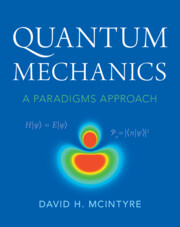The crystal structure of kaolinite(Pl, a = 5.153(1), b = 8.941 (1), c = 7.403 (1)Å, α = 91.692(3)°, β = 104.860(3)°, γ = 89.822(3)°, specimens from Keokuk geodes) has been refined in detail and that of dickite (Cc, a = 5.1460(3), b = 8.9376(5), c = 14.4244(6) Å, β = 96.761(5)°) has been re-refined, both from powder diffraction data with the Rietveld method. Except for the hydrogen atoms, the layer structures in both clays are very similar and are much as inferred or determined previously by others. The rotation in the tetrahedral sheet is 7(1)°. The two inner hydroxyl O-H bonds in kaolinite are differently oriented; one points into an octahedral vacancy and the other somewhat away from the octahedral sheet and toward the unoccupied center of an oxygen triangle formed by the two apical oxygens and shared basal oxygen of two adjacent SiO4 tetrahedra. All six of the inner surface hydrogen atoms appear to be nearly equally involved in the hydrogen bonding between kaolinite layers in kaolinite.
